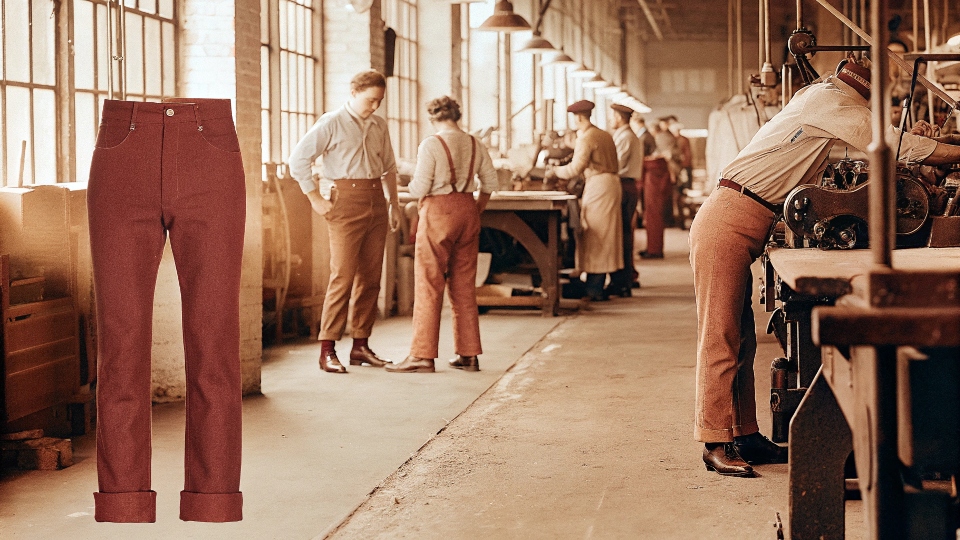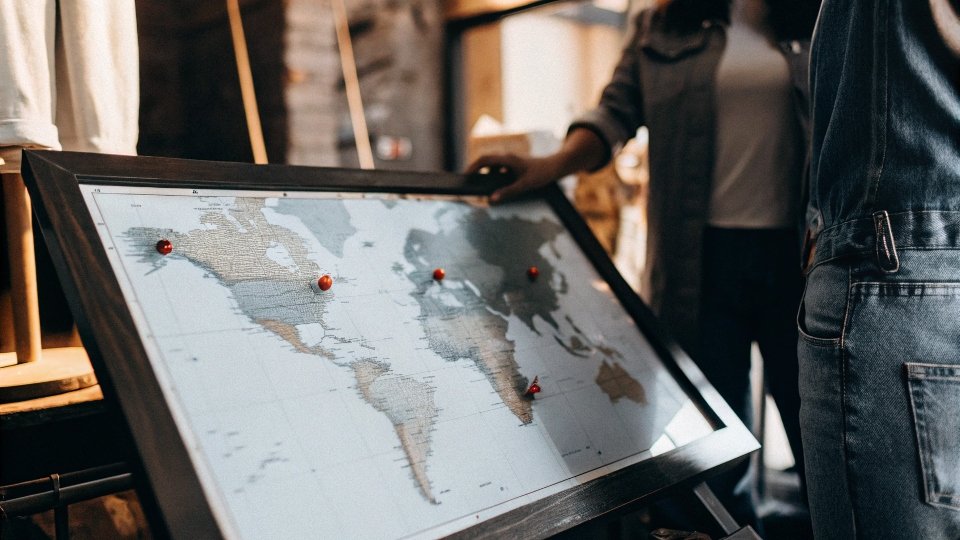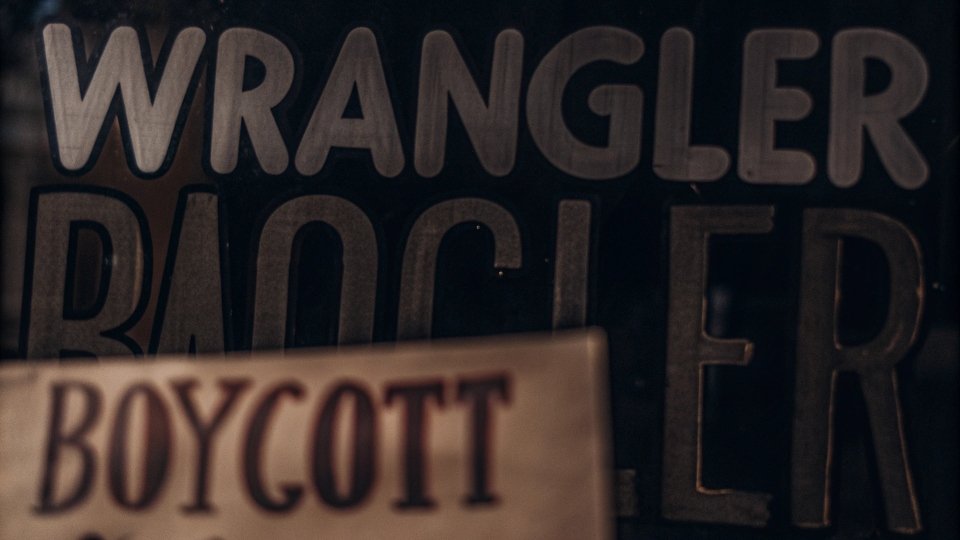You see the iconic "W" stitch everywhere, but the company behind this legendary brand is not always obvious. The answer shows how the modern apparel industry truly works.
Wrangler jeans are made by Kontoor Brands, a global apparel company. Kontoor was spun off from VF Corporation in 2019 and now owns and manages the Wrangler, Lee, and Rock & Republic brands.
As someone who has lived and breathed denim for over 20 years, I know a brand is more than just its current owner.
Wrangler has a deep and fascinating history that started long before Kontoor Brands. That story explains why the jeans are designed the way they are.
Understanding a brand's heritage is key for any designer, like my client Dean, who wants to create authentic products. It's the difference between just making clothes and telling a story. Let's look at how it all began.
Who is the maker of Wrangler?
You know the name Wrangler, but its journey to becoming a legendary brand is surprising. It began over a century ago with a completely different company name.
Wrangler's story began in 1904 as the Hudson Overall Company1, later becoming Blue Bell. Blue Bell2 acquired the "Wrangler" name in 1943 and launched the first official Wrangler jeans in 1947, specifically for cowboys.
The history of a brand is like its DNA. In my factory, we often look at vintage garments to understand how they were built, and Wrangler's construction tells a story of purpose.
The brand wasn't just created; it was engineered. After Blue Bell acquired the name, they hired a famous rodeo tailor, Bernard "Rodeo Ben" Lichtenstein3, to design a pair of jeans specifically for cowboys.
The result was the iconic 13MWZ (13th prototype, Men's, With Zipper) model. Every detail was functional, from the flat rivets that wouldn't scratch a saddle to the higher back pockets.
This practical, purpose-built approach is what set Wrangler apart from the very beginning. It wasn't just workwear; it was equipment.
Wrangler's Corporate Timeline
| Year | Event |
|---|---|
| 1904 | C.C. Hudson starts the Hudson Overall Company1. |
| 1919 | The company is renamed the Blue Bell Overall Company. |
| 1943 | Blue Bell acquires the "Wrangler" brand name. |
| 1947 | The first official Wrangler 13MWZ cowboy-cut jeans are introduced. |
| 1986 | Blue Bell merges with VF Corporation, making Wrangler a VF brand. |
| 2019 | VF Corporation spins off its jeans division into a new company, Kontoor Brands. |
What is the difference between Levi's and Wrangler Jeans?
Levi's and Wrangler are the two giants of American denim. You might think they're similar, but their core design philosophies are fundamentally different, dating back to their origins.
The main difference is their original target audience. Levi's were designed for miners and laborers, emphasizing rugged durability. Wranglers were designed specifically for cowboys, focusing on comfort and functionality for riding horses.
When designers like Dean bring me a project, we first discuss the target customer, because that defines every detail. The Levi's vs. Wrangler debate is a perfect case study.
Levi's used rivets to reinforce the stress points for miners who crouched and carried heavy tools. Their focus was on pure strength. Wrangler took a different approach for cowboys.
They replaced the back pocket rivets with flat copper ones to avoid scratching the saddle. They also placed the back pockets higher so a wallet wouldn't be uncomfortable during a long ride.
Even the choice of denim was different. Wranglers famously used a "broken twill" denim that was designed to prevent the leg from twisting, making it more comfortable.
These aren't just style choices; they are functional solutions for two very different types of wearers.
| Feature | Levi's (The Miner's Jean) | Wrangler (The Cowboy's Jean) |
|---|---|---|
| Origin | Made for 19th-century California gold miners. | Made for 20th-century rodeo riders and ranch hands. |
| Rivets | Exposed copper rivets on all pockets for reinforcement. | Flat, smooth rivets on the back pockets to protect saddles. |
| Pockets | Standard placement for walking and working. | Back pockets are set higher for comfort while seated. |
| Stitching | "Arcuate" double-arc stitching on back pockets. | "W" stitching, representing "Western Wear." |
Where are Wrangler Jeans made?
You might look at the tag for a simple answer, but "Made in" doesn't tell the whole story. The production of Wrangler jeans is a complex, global operation.
Wrangler jeans are manufactured in various countries around the world, including Mexico, Bangladesh, and China. Kontoor Brands uses a global supply chain, leveraging different regions for specific skills and costs.
As a factory owner in Dongguan, China, I am a part of this global supply chain. The process of making a single pair of jeans is a worldwide journey.
The cotton might be grown in the USA or Brazil, spun into yarn in Turkey, woven and dyed into denim in China, and then cut and sewn in Mexico or Bangladesh.
A company like Kontoor Brands doesn't have just one factory; it has a network of partners. Each region has its own strengths.
For example, my factory specializes in complex denim washing and finishing, which is why brands come to us for unique looks.
Other regions might be better for high-volume, basic sewing. This global system allows brands to manage costs, access specialized skills, and get products to different markets efficiently.
So, while the brand is American, the physical creation of the jeans is truly international.
Why are people boycotting Wrangler Jeans?
Brands sometimes get caught in cultural debates. You may have heard calls to boycott Wrangler, but the reasons can get lost in the noise of social media.
The primary boycott calls against Wrangler emerged from gun control advocacy groups. This was due to the brand's parent company's past associations and refusal to sever ties with organizations like the NRA4.
This is a really difficult situation for any brand. Wrangler built its entire identity around the American cowboy and Western culture.
This authentic connection is its greatest strength. However, in modern times, some of the values associated with that culture have become politically divisive.
The boycott pressure in recent years was a direct result of this. Activist groups demanded that VF Corporation (and later Kontoor Brands) end any affiliations with gun rights organizations.
The company's decision not to do so was seen by some as taking a political stance, which led to boycott calls. From a business perspective, this is a major challenge.
Do you alienate a portion of the general public, or do you risk alienating your loyal, core customer base that shares the brand's traditional values?
It shows how a brand's identity, especially one as strong as Wrangler's, can be both a powerful asset and a source of controversy.
Conclusion
So, Wrangler is made by Kontoor Brands, but its identity was forged over a century. From its purpose-built cowboy design to its role in modern cultural debates, its story is truly unique.
-
Discover the origins of Wrangler's brand story starting from the Hudson Overall Company. ↩ ↩
-
Understand how Blue Bell's acquisition shaped the Wrangler brand we know today. ↩
-
Learn about the tailor who designed Wrangler jeans specifically for cowboys. ↩
-
Explore the controversial ties between Wrangler and the NRA that sparked boycotts. ↩

[^1]](https://diznewjeans.com/wp-content/uploads/2025/10/wrangler-jeans-are-made-by-kontoor-brands-a-glo.jpg)

[^5] Jean Details A split image showing a Levi's rivet on one side and a Wrangler flat rivet on the other](https://diznewjeans.com/wp-content/uploads/2025/10/the-main-difference-is-their-original-target-aud.jpg)







